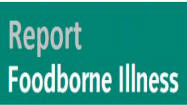Salmonellosis
Salmonellosis is caused by a Gram-negative bacillus,
Salmonella enterica, of which there are more
than 2,500 serotypes. This disease is transmitted by the fecal-oral route, from animal or human,
with or without intermediary contamination of foodstuffs. The most common symptoms include
diarrhea, fever, headache, abdominal pain, nausea and sometimes vomiting. Occasionally, the
clinical course is that of enteric fever or septicemia. Asymptomatic infections may occur. The
incubation period is usually 12–36 hours for gastroenteritis, longer and variable for other
manifestations. Communicability lasts as long as organisms are excreted, usually from 2–5 weeks,
but may last for months to years. Healthy people are susceptible, but persons especially at risk
are those who are on antacid therapy, have recently taken or are taking broad-spectrum antibiotic
therapy or immunosuppressive therapy, or those who have had gastrointestinal surgery, neoplastic
disease, or other debilitating conditions. Severity of the disease is related to the serotype,
the number of organisms ingested, and host factors. Immunocompromised persons, such as those with
cancer or HIV infection, are at risk for recurrent Salmonella septicemia. Occasionally the organism
may localize anywhere in the body, causing abscesses, osteomyelitis, arthritis, meningitis,
endocarditis, pericarditis, pneumonia, or pyelonephritis.
News and Updates
Special Studies Reports
Additional Resources
Publications & Archives


